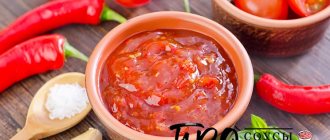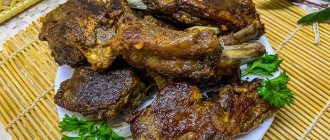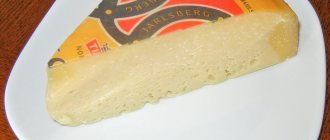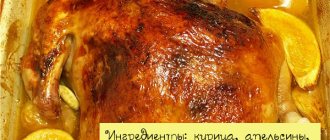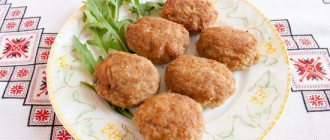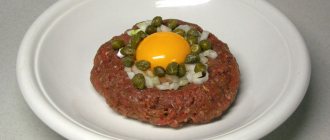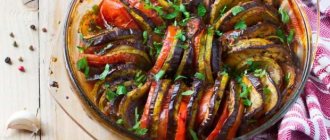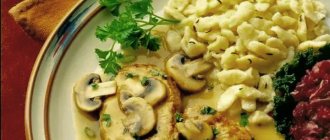Armenian khash
One of the most popular national dishes of Armenian cuisine is khash. This is a special soup or stew made from beef legs, seasoned with garlic. Before the dish is served, it is seasoned with vinegar and some seasonings. The boiling process is very long. The house where khash is prepared can be smelled from afar - the aroma of khash can be heard from its windows. It cannot be confused with anything else. The broth turns out to be very rich and high in calories. Armenians eat it for breakfast or even before breakfast. And there is a custom to accompany khash with vodka. A bit of a strange tradition, but the ancients said it was useful.
History of development
The formation of Armenian cuisine began 2.5 centuries ago. For many centuries, Armenia was subject to conquests by powerful neighbors. At different times, its territories were owned by Persia, Egypt, and Türkiye. Despite numerous oppressions, Armenians managed not only to preserve the originality of their national culinary traditions, but also to influence the development of other cuisines of the world. Already in ancient times, Armenian cuisine was distinguished by the complexity of preparing dishes. The local population was one of the first to learn how to ferment dough and bake bread.
Harisa
Kharisa is a special Armenian dish. This is cereal with meat. It is also a popular dish among the Armenian army because it is very nutritious. Previously, in Armenia, most victories in the army were usually accompanied by harissa.
Now in Musaler in Armenia, every year people celebrate the victory over the Turkish army in 1915. The holiday takes place near Mount Musaler. And Harisa is a must-have dish for the event.
In a cast iron vessel or pan with a thick bottom, cut the chicken (turkey) into pieces and fill the vessel with water. Then wheat and salt are added there. Everything cooks together for a very long time (at least two or three hours) over low heat. As soon as the meat begins to fall away from the bones, remove it and separate it from the bones and add it back to the grain, then continue cooking the harissa, stirring constantly, until the meat has dissolved and the wheat has turned into a thick mass. Hot harissa is placed in bowls, and a large spoonful of melted butter is added to the middle of the dish. You need to eat harissa in a special way: with a spoon, periodically dipping the food into oil in your own bowl. A whole ritual! But how memorable he is!
Finally
I will leave the results and conclusions about Armenian cuisine for you, but in conclusion I would like to mention a few more facts:
- After many Syrian-Armenians moved to Armenia, the country's cuisine diversified somewhat and included even more spicy oriental flavors. Now in Armenia, in particular in Yerevan, several decent cafes and restaurants are open, which also serve delicious dishes of Syrian and Middle Eastern cuisine: falafel, tabbouleh, lagmajo, hummus and much more!
- National Armenian restaurants and taverns serve not only native Armenian dishes. Dishes of the peoples of the Caucasus and Transcaucasia are also widely represented on the menu, so don’t be surprised. By the way, I’m handing over the passwords: the Yerevan Pandok tavern serves some of the most delicious national dishes, and on Tumanyan Street there is a khinkali, where khinkali, according to many of my tourist friends, is tastier than in many restaurants in Tbilisi. What is not a reason for comparison?
- What else to say? Fruits and more fruits!
Sweet as honey and juicy apricots, figs and peaches are a real calling card of sunny Armenia. So quickly pack your bags and go for new gastronomic sensations!
Traditional Armenian khashlama
Traditional Armenian khashlama is made from lamb. During the cooking process, the meat becomes tender, the broth is full of juices from fresh summer vegetables and herbs, and the aroma is unforgettable. White onions, tomatoes and sweet peppers are always added to khashlama. Potatoes only entered Armenian cooking in the 19th century, so some people do not add them to the dish. It's a matter of taste. A glass of Armenian wine is mandatory when preparing khashlama. You should not interfere - this is the specificity of this dish, so that the vegetables remain intact.
Cuisine of Artsakh (Nagorno-Karabakh)
As I already mentioned, some traditional Armenian dishes should be eaten in certain cities and regions of the country, where they are prepared best, carefully observing all the necessary rules and ancient recipes.
That is why I decided to somewhat separate and highlight Artsakh cuisine, where there are dishes and delicacies worthy of special attention that can only be prepared here. By the way, one of the secrets of the longevity of the residents of Arkhats is also considered to be local food, which is prepared only from fresh, environmentally friendly products.
Zhengyalov hats
This is the culinary calling card of Artsakh. A real zhengyalov hats is a kind of flatbread stuffed with no less than 25 types of different greens. I first tried zhengyalov hats several years ago in one of the eco-restaurants in Garni. The taste is unusual, but I wouldn’t order it a second time.
And recently, fate brought me to Stepanakert, the capital of Nagorno-Karabakh, where, as you already understand, it would be a sin not to try local dishes. And now here I tried real Zhengyalov hats, which the locals prepared right before my eyes. You need to eat it hot, right next to a hot frying pan. But most importantly, the filling really must consist of a dozen types of greens, otherwise you risk being disappointed.
Tapaka in Artsakh
An incredibly tasty and juicy dish, which includes fried and layered potatoes, onions, eggplants, peppers, tomatoes and lamb maso.
Armenian lavash
Lavash is a unique bread in many respects; it has an unusual, pleasant taste and is baked from a small amount of ingredients.
Despite its antiquity, the recipe for Armenian lavash has not changed much over time. With all its benefits, lavash can be considered one of the healthiest types of bread.
How did lavash appear?
It is impossible to say for sure whether it was made on fire from crushed cereals. At the same time, one cannot help but say that the composition of ordinary lavash is most similar to that which was obtained during the first attempts to bake bread. This is a thin flatbread that consists of two ingredients - water and flour.
Today, lavash is considered an exclusively Armenian dish, since in the kitchen of the Armenian people it is used as the main type of bread. From Transcaucasia, lavash spread throughout the world.
The word "lavash" translates as "good food." This proves that ancient cooks knew about the important composition of pita bread.
Zhengyalov hats
This dish with an interesting name is a flatbread made from unleavened dough, stuffed with any edible herbs. Moreover, not only traditional herbs, such as basil, cilantro, dill or parsley, are used as a filler, but also rare ingredients such as quinoa or shepherd’s purse. To prepare this Armenian snack you will need:
- 600 grams of flour;
- 350 milliliters of water;
- a teaspoon of salt;
- a bunch of sorrel, green onions, parsley, dill and jusai;
- a couple of large spoons of vegetable oil.
First of all, you need to knead a dense, but not too stiff dough from flour, water and salt. Then it is wrapped in polyethylene and left for half an hour. After thirty minutes, small pieces are plucked from it and rolled into thick, neat cakes. A filling made from chopped herbs, salt and vegetable oil is placed in the center of each piece, and the edges are carefully sealed. The finished products are flattened into a flat cake shape and fried in a frying pan.
Armenian basturma
The recipe for Armenian basturma has been known for a long time. Thinly sliced pieces of dried basturma are usually served as a cold appetizer. Real Armenian basturma, the price of which is quite high, is a delicacy.
The recipe for making basturma appeared in hot climates and in the absence of refrigerators. To preserve meat under these conditions, it was necessary to resort to the help of a sufficient amount of salt.
How to cook Armenian basturma?
To prepare Armenian basturma at home, only tender meat is used.
That is why the calorie content of basturma is not too high due to its low fat content.
Homemade basturma is very tasty, but, of course, it is easier to buy basturma at the market or in a store, since basturma at home will only be ready in three weeks.
General principles
Snacks related to the national cuisine of Armenia are quite specific. Almost all of them are very filling, quite spicy and incredibly tasty. As a rule, they are prepared based on meat, poultry, fish or vegetables with the addition of a large amount of garlic and spices.
Greens are considered an integral component of such dishes. Most often, tarragon, green onions, basil, parsley or dill are added to salads and cold appetizers. As for spices, cumin, marjoram, black and red pepper are especially popular among local chefs. Often nuts, vinegar, sour cream and matsun are added to Armenian snacks. All of them give ready-made dishes a unique aroma and spiciness.
What is Armenian fish kebab?
This is fish with spices. The taste is unforgettable. Garlic, saffron, cumin, turmeric, coriander seeds, sweet pepper, vegetable oil.
You need to mix all the ingredients for the marinade, then cut the fish into portions and marinate (at least 3 hours). This is how shashlik or kebab is prepared.
It is very popular in Armenia because people prefer fish all year round.
Crayfish shashlik is one of the most interesting dishes in Armenia. The soft meat is mixed and sausage-shaped shapes are formed. The tender kebab and spicy aroma of this dish will not leave anyone indifferent.
Only in Armenia you can try this!
Baked vegetable salad
In the original, this tasty and healthy dish is prepared on the grill. But in our conditions it can be done on a regular stove. To create it you will need:
- 5 eggplants;
- a couple of cloves of garlic;
- 5 bell peppers;
- red onion;
- whole lemon;
- a bunch of cilantro;
- vegetable oil, salt and aromatic spices.
The Armenian eggplant appetizer is so easy to prepare that any beginner can handle this task. Washed vegetables (blue and peppers) are placed on the burners that are turned on and turned over as the skin chars. As soon as they are completely ready, they are literally immersed in cold salted water for a minute and cleaned of skins, seeds and stalks.
After this, the vegetables are cut into large pieces and placed in a deep bowl. Chopped cilantro, onion and garlic are also added there. The prepared Armenian eggplant appetizer is seasoned with a mixture of vegetable oil and freshly squeezed lemon juice. Serve it with barbecue.
Fermented milk soup Spas
Spas is a national Armenian fermented milk soup! One of the most popular in Armenia! A very light dish, and low in calories, tender, tasty, with sourness...
It can be served hot, for starters (especially if the weather is cold), and cold (in summer weather)… It warms, refreshes and satisfies hunger…
Spas is also a very healthy soup! For the Armenian people, this is an indispensable dish for colds, flu, fever... Spas helps with intestinal disorders, headaches, and high blood pressure.
Spas is one of the masterpieces of Armenian cuisine! Saved for Armenians, what borscht is for Ukrainians, okroshka is for Russians, or pasta is for Italians!
Alternative to Georgia, where can you go?
Armenian food reveals only the unknown and pleasant to you... That which brings back memories, disturbs the soul and even makes you think about the secrets of history and today's existence...
Culinary traditions
In Armenia, food is treated with special respect, and the process of cooking is considered an almost sacred ritual.
Since ancient times, Armenians have cooked their food over fire. Then they came up with a special oven - tonir. For her, they dug a deep hole in the ground and lined its walls with stone. Tonir was used for preparing bread and pita bread, smoking meat, drying fruit and heating the home. Before the adoption of Christianity in Armenia, this oven was considered a symbol of the sun; housewives worshiped it when they cooked bread in tonir. Many national dishes are named after the ancient dishes in which they are prepared, for example tapak, putuk, kchuch.
Armenian cuisine carefully preserves its centuries-old traditions.
Crayfish from Lake Sevan
Just like crayfish from Lake Sevan , when it’s almost night and the kitchens of all restaurants are closed!
I won’t say that the crayfish here are special, but I will note that they are very expensive. But these are the kind of seafood that are rare in Armenia and just when you really want it, you can and should buy it.
If you have vegetarians in your company, buy them boiled chickpeas; they are sold in almost any store in the beer snacks section)) so they are also salty.
In the photo you can also see blue cheese , which Armenians prepare for the winter, and we bought it at the Vorotan Pass. And below on the right is another type of lavash. It is also very popular and is eaten fresh.
I recommend reading: Vorotan Pass
Red bean paste
This appetizer of Armenian cuisine is prepared on the basis of legumes with the addition of walnuts. Therefore, it has a pleasant, slightly sweet taste and spicy aroma. To make a similar pate you will need:
- 300 grams of red beans;
- a couple of large spoons of vegetable oil;
- 70 grams of toasted nuts and butter;
- ½ teaspoon each red and black pepper;
- 3 cloves of garlic;
- a teaspoon of ground nutmeg;
- 50 grams of fresh cilantro;
- a tablespoon of khmeli-suneli;
- salt (to taste).
The washed beans are poured with cold water and brought to a boil. Add vegetable oil to the bubbling liquid and reduce the heat. Ten minutes before the end of cooking, add a little salt to the beans. The warm finished product is placed in a food processor and chopped together with pre-roasted nuts. The resulting mass is seasoned with butter, and then mixed with crushed garlic and spices. Add a little liquid in which the beans were cooked. Everything is put through the processor again and combined with chopped herbs.
Features of Armenian national cuisine
Armenian cuisine is considered one of the most ancient in Europe. It is the oldest cuisine of Transcaucasia. Traditions that date back to ancient times have still been preserved. For example, some types of bread in Armenia are baked using the same technology as 2.5 thousand years ago.
It is unknown who made such calculations, but it turned out that for cooking, Armenians use about 300 wild plants. These include herbs and flowers. A striking feature of the national cuisine is the love of salt. There are many recipes for dishes where salt plays a dominant role. Don’t forget about the Armenians’ love for spices. Cumin, cloves, saffron, pepper and other spices are added to appetizers and main dishes in large quantities.
Another distinctive feature is the abundance of greenery. It is impossible to imagine an Armenian table without cilantro, dill, parsley and basil. Vegetables, cooked or fresh, are also an integral part of any meal. People here like asparagus, beans, cabbage, eggplants, peppers, etc. But the most important and basic ingredient of traditional Armenian cuisine is meat. As a rule, this is lamb. Pork or beef is used extremely rarely. From poultry, preference is given to chickens, geese and turkey.
Cooking green tomatoes
Even a young housewife can handle this, because the recipe is quite simple.
- If the tomatoes are large, then you need to cut them into four parts, and small ones - in half.
- Finely chop the cilantro and hot pepper, and pass the garlic through a press. Mix all the ingredients, then rub each tomato slice well with this mixture and leave for an hour.
- Place the tomatoes in a sterile jar, pressing them down so they fit tightly.
- Mix water, vinegar and salt in a saucepan and boil. Pour the resulting liquid over the tomatoes. Boil the lid and close the jar tightly.
- Turn it upside down, wrap it in a warm blanket and leave it until it cools completely. Then you can store it in the refrigerator or pantry.
You can try the snack in a week.
Soup with chickpeas and lamb meatballs
Armenian meat dishes are often prepared with the addition of fruits and fruit ingredients (syrups, sauces, molasses).
This combination is especially common in soups.
What ingredients will you need?
For the broth:
For the soup:
Step-by-step cooking process
Bozbash
Armenian hearty meat soup with vegetables and tomato dressing.
You will need:
300 g of lamb, 0.5 cups of chickpeas, 2 onions, 1 tbsp.
butter and tomato paste, 2 potatoes, 1 apple, 0.5 cup prunes, 1 tbsp. lemon juice, spices. Preparation:
Soak the chickpeas overnight in advance. Coarsely chop the lamb, simmer for an hour after boiling, remove from the pan and add chickpeas to the broth. After 20 minutes, add the fried onion with tomato paste in butter and the rest of the ingredients. Boil everything together for another 10 minutes, season with lemon juice and spices, and let it brew for 20 minutes.
How to ferment cabbage?
The recipe for Armenian preparation for the winter differs significantly from the method familiar to Russian people. This is done as follows:
- Remove all spoiled and top leaves from the cabbage. Cut the forks in half if they are small, and into quarters if they are large.
- Peel the carrots and cut into slices, and the beets into slices approximately 1.5-2 cm wide.
- Peel the garlic, but do not chop it.
- Cut the celery and parsley roots into pieces 5-7 cm long.
- Peel the hot pepper and chop into thin strips. It is recommended to do this with gloves.
- Boil water with peppercorns, bay leaves and salt. Cool the marinade.
- Place a layer of cabbage leaves removed from the forks into the fermentation barrel. Then beets and carrots. Tamp down the vegetables, place garlic, parsley and celery roots, cherry leaves and hot pepper on top. Next, send the cabbage, cut into pieces, compact it again and pour in the marinade.
- You definitely need to install a press. The marinade should cover the vegetables and be at least 5 cm higher.
For the first four days, the barrel should stand at room temperature. Then it must be removed to a room in which the air temperature does not exceed +10 degrees. The appetizer will be ready in a month and a half.
general characteristics
The factors that influenced the formation of Armenian cuisine are the geographical location of the country, as well as the cultural and historical traditions of the Armenians.
Geographical factors played an important role in the formation of culinary traditions in Armenia: favorable climate, fertile soil, and a large number of rivers. As a result, livestock farming actively developed in the region, and meat and dishes made from it became the basis of Armenian cuisine, as well as fermented milk products.
Content:
- general characteristics
- Characteristics
- Main dishes
- Beneficial features
- Cooking Armenian soup saved
- Cooking khashlama
Armenian cuisine owes its intensive development of agriculture to the fact that the diet of the local population includes a huge amount of vegetables and grain dishes: barley, rice and wheat. At the same time, what is curious is that grains are usually used not separately from each other, but in various combinations - Armenians mix cereals and legumes with each other to prepare soups and porridges.
Fruits in Armenia are often not only present in the diet as a separate dish, but are also used as a flavoring additive or side dish for meat and fish dishes. Moreover, apples, quinces and dried apricots are even added to soups here!
It is noteworthy that even at the dawn of the formation of Armenian cuisine, local residents tried to stuff vegetables with meat and aromatic herbs and used various types of heat treatment.
According to experts, in Armenia the process of cooking is a significantly longer and more labor-intensive task than in other countries. This is explained not only by the fact that most Armenian dishes combine several types of heat treatment, but also by the specific attitude of Armenians to food. The process of preparing food is considered a kind of sacred act here, and the products are treated with sincere respect.
DISHES AND RECIPES OF ARMENIAN CUISINE
Taking into account all the features, we can safely say that the cuisine of Armenia is a godsend for any gourmet. It contains hundreds of unique ancient recipes. It’s difficult to describe them all, so it’s worth highlighting the most interesting ones.
Snacks
Armenian snacks are quite specific. Juicy sausages, spicy jerky - all these dishes are hearty, high-calorie and incredibly tasty. With their help you can feel the whole flavor of Armenian cuisine. One of the original national dishes of Armenia is basturma - dried beef tenderloin. As the ancient legend says, the recipe for its preparation was invented by the brave warriors of the Mongol Khan Genghis Khan. When they went on their next trip, they put pieces of meat under the saddle of the horse. Under the heavy weight of the riders, it lost moisture, and during the long journey it became saturated with horse sweat, thanks to which it turned into a nutritious and long-lasting product. Over time, the cooking technology has improved a little, and basturma has become a real Armenian delicacy, without which not a single holiday can be completed. To prepare a gourmet meat snack, only beef is used. The meat is generously rubbed with salt and spices and placed under pressure for a period of at least 20 days. After the set period has expired, it is soaked in cold water, and then generously rubbed with fragrant Armenian herbs and seasonings, after which it is dried for another 20 days. Basturma is characterized by a pronounced spicy aroma. Cut into thin long slices and serve at the festive table. You won’t find a better appetizer for noble Armenian cognac, although in this regard, sujuk is a worthy rival to basturma. Surprisingly tender, juicy, aromatic, spicy sausage made from beef - this is a gourmet's delight. Despite its unattractive appearance, sujuk is considered a real delicacy. Unlike traditional sausages, sudzhuk is not smoked, but dried for 1-1.5 months, which provides an authentic taste that is difficult to confuse with anything else. This cold appetizer goes well with exquisite Armenian alcoholic drinks. When serving, it is cut into thin slices, seasoned with spices and decorated with herbs. An unusually simple but original snack among Armenians is lula kebab - this dish appeared relatively recently. It is prepared mainly in coastal areas located near Lake Sevan. An appetizing hot appetizer of crayfish necks is a divine delight. Meat fried on the grill turns out to be very juicy, and a number of spices and seasonings make it incredibly tasty. It is advisable to serve seafood hot - when it cools, the meat becomes tough and loses its taste.
First meal
The rich heritage of Armenian cuisine includes a considerable number of hearty first courses. They are represented mainly by soups. To prepare them, they use a variety of products - rice, vegetables, fruits, meat, a lot of spices and wild herbs. The main group consists of dishes prepared on the basis of meat or fish broth. Fermented milk and sweet fruit soups are widespread. The most famous Armenian soup is khash. The first mention of it dates back to the 12th century. Previously, it was called a poor man's dish, because second-class meat, mainly innards and beef legs, were used to prepare it. There is even a legend that says that once the king of the Armenians was forced to spend the night in a remote village. The generous and hospitable host was able to treat the high-ranking guest only to a simple soup. But the king liked it so much that from then on khash became the main treat not only on the royal table, but throughout the country. Today, classic khash is prepared from beef or lamb legs, tripe and entrails. A lot of herbs are added to it - parsley, celery and cilantro, as well as seasonings - garlic and pepper. The preparation process is very labor-intensive and takes almost a day. But the khash itself turns out to be very thick and rich. It can satisfy your hunger for the whole day. This soup is not only tasty, but also healthy. It contains a lot of calcium and other trace elements necessary to strengthen joints. It is also irreplaceable after a hectic party; it perfectly helps get rid of a hangover. Khash is served along with lavash, garlic, radish, herbs and hot pepper. Bozbash is very popular in Armenian cuisine - it is a hearty, rich soup with vegetables and young lamb meat. It differs in that it necessarily contains chickpeas (chickpeas) and chestnuts. Due to the large amount of vegetables (potatoes, tomatoes, sweet peppers, carrots and eggplants are added), it has a thick consistency. In some regions, it is customary to add fresh fruits (apples, cherry plums, plums) to the dish, which gives it a slight sweetness, delicate taste and indescribable aroma. Armenians also have several varieties of bozbash: Yerevan, Etchmiadzan, Siman, Tushino, winter and summer. The recipe for their preparation is almost the same, the main difference lies in the set of main ingredients. Yerevan Bozbash is prepared with the addition of apples, Etchmiadzan - with beans and eggplants. Simansky has a slight sour taste, which is achieved by adding a special variety of plums. For Tushino, be sure to use several slices of quince, and add a little dried apricots to the winter one. The group of exotic dishes includes poch, an ancient Armenian stew. It is prepared from beef tail with the addition of tomatoes. To get rid of the unpleasant odor inherent in this part of the animal’s body, it is soaked in water for 24 hours. When preparing the soup, the tail is cut into small pieces, onions, tomatoes and peppers are added. It is served with finely chopped garlic and herbs. Light, dietary first courses include chulumbur apur - this is rice soup with fried onions. Beaten eggs mixed with fresh milk are used as a dressing. The soup is light, but at the same time unusually satisfying. It is prepared quickly and when served, it is decorated with finely chopped herbs and sweet pepper. Sweet soups are also very popular in Armenian cuisine. Local residents call Anush Singapore one of these. To prepare it, use dried apricots, finely chopped onions and a little butter. The food is served exclusively hot. Yayni, a soup based on beef broth with dried apricots, is characterized by a sweetish taste. According to the recipe, the beef is boiled separately and added exclusively at the time of serving. Then potatoes, tomatoes and onions are added to the finished broth. For a richer taste, dried apricots, spices and seasonings are used. When serving, the dish is decorated with finely chopped herbs, mainly parsley and cilantro. The category of dietary dishes includes sunki apur - a simple rice soup with mushrooms. Seasoned with ghee or butter, it has an extremely delicate, aromatic taste. A variety of seasonings and herbs give it a unique, refined aroma. Due to its quick digestibility, sunki apur is usually served mainly for breakfast. The category of the most popular dishes in Armenian cuisine includes spas, a low-calorie fermented milk soup. There are many options for preparing it. As a rule, it is prepared with the addition of wheat, and in some regions - rice. Its integral elements are matsun and katyk (fermented milk products). It’s hard to imagine a real Armenian spa without a huge amount of greenery. Cilantro is often used, sometimes a pinch of fresh mint is added. For a brighter taste, add a little red pepper, which gives the dish some heat and piquancy. Spas is served both hot and cold. It warms you up well in the cold of winter, and on hot summer days it refreshes you and gives you energy and strength; in addition, it also satisfies hunger quite well. The dish also has medicinal properties - just like khash, it helps get rid of hangover symptoms. A traditional Armenian dish is sarnapur - a light cereal fermented milk soup with beet tops. It turns out that it is very useful, helps to get rid of excess weight, and perfectly satisfies the feeling of hunger. The dish is prepared on the basis of matsun; in the European version it is replaced with kefir. Its main components are rice groats, peas and beet tops. As for the latter, it must be young and fresh, otherwise the taste will be spoiled. Sarnapur is served mostly hot, as usual, with a lot of spices and herbs added. Among the meat stews, the bell is worthy of attention - a spicy tomato-rice soup with meatballs. There are different variations of it in individual regions. Urfa-bell is considered popular - it is a light soup with meatballs, but without porridge. Armenians call Shusha bell more labor-intensive in terms of preparation. In this case, the meat is initially beaten and marinated with spices, herbs and cognac. Then meat balls are formed and boiled in broth. Then add rice and cook until done. The end result is a hearty soup, the taste of which is harmoniously complemented by aromatic herbs and a large number of different spices.
Second courses
Khorovats, or shish kebab, is often called a distinctive calling card of Armenian cuisine. In Armenia, there are about 20 variants of its preparation, differing in the method of marinating and the technology of frying the meat. The most famous is karsi khorovats, in this case the base is fried on the grill. The second option is Khazani Khorovats; the peculiarity of its preparation is that the fried meat is still stewed in a saucepan. As a result, the kebab turns out juicy, and the meat has a delicate pink color. In some regions, khorovats made from beef and fat tail fat called iki-bir is popular. Classic khorovats is made from lamb or pork. The meat is pre-marinated using lemon juice, cognac, wine or ordinary vinegar, then fried over a fire. To make the kebab juicy, put a little fat tail fat on skewers. Khorovats is served with vegetable side dishes. Often this is an assortment of tomatoes, eggplants, onions and green peppers, seasoned with garlic and baked on the grill. Armenia also has its own traditions of preparing khorovats, which have evolved over centuries. So, this dish is prepared exclusively by men. Every Armenian family has its own kebab master, he is called varpet. Only men can be near the barbecue; women are not allowed near it. Cooking barbecue is always accompanied by exciting and funny stories. When the meat is completely cooked, it is removed from the skewers, placed on pita bread and divided equally among all family members. In the cookbook of every Armenian housewife you can find a recipe for a unique Etchmiadzin-style dolma. Everyone knows what dolma is – it’s minced meat wrapped in grape leaves. The technology for preparing dolma in Etchmiadzin is slightly different from the traditional recipe. Its main difference is that the minced meat is not wrapped in grape leaves, but stuffed with various vegetables, which are then baked in the oven or simmered over low heat. Eggplants, tomatoes or bell peppers are used as a base. Vegetables are peeled, steamed and stuffed with minced lamb, rice and onions. During stewing, the meat becomes very tender and absorbs all the aroma of the vegetables, as a result of which dolma turns into a real delicacy. Ashtarik dolma is popular in the mountainous regions of Armenia. Her recipe is a little unusual. In this case, the basis for the filling is fresh apples and quince. Stuffed with juicy minced meat, the fruits are baked in a pan, adding a little dried apricots and prunes. Whatever cooking options for dolma are used, the dish is served hot in any case. According to Armenians, it goes perfectly with dry wine or cognac. The harmonious combination of aromatic lamb, stewed vegetables or fruits and various spices will make an indelible impression on lovers of both Caucasian and European cuisine. The pride of Armenian cuisine can be called kyufta. The most tender meat balls made from fresh beef, seasoned with fragrant herbs, hot pepper and butter, are an integral element of the Armenian festive table. The process of preparing them requires a lot of time and skill, but the unusual taste compensates for all the costs and makes you forget about the difficulties you have experienced. By the way, this dish is dietary, easily absorbed by the body and does not cause a feeling of heaviness. Mainly veal is used to prepare kufta. The chopped meat is mixed with beaten eggs, cognac, flour and finely sautéed onions, making it airy, juicy and somewhat reminiscent of a soufflé. Afterwards, all this is boiled and served. When serving, the meat is wrapped in pita bread and topped with herbs, hot peppers and pomegranate seeds. Among the wide range of meat dishes, it is worth highlighting tisvzhik. Having tried it, hardly anyone would suspect that the main ingredient for cooking here is lamb offal. Finely chopped heart, lungs and liver, fried with fat tail and onions - everything looks simple, but tasteful. Khashlama is an ancient Armenian dish. Tender boiled lamb marinated in wine or pomegranate juice in combination with vegetables has become one of the most beloved and sought-after dishes among Armenians. Khashlama is a universal dish, served both hot and cold. Like other Caucasian peoples, pilaf is one of the favorite dishes of Armenians. However, in Armenian cuisine, the option with dried fruits (dried apricots and prunes) is very popular. In some regions you can find pilaf with pomegranate or honey-pistachio sauce.
Bakery
The main place in the Armenian diet is occupied by lavash - unleavened white bread in the form of a large flatbread made from wheat flour. Its striking feature lies in the extremely thin dough: the thickness of one flat cake should not exceed 2.5 mm. Baking resembles a real ritual. According to tradition, the oldest woman in the house kneads the dough. The daughter-in-law has the right to roll out the cakes. They themselves should be not only thin, but also large. Typically, the length of lavash is from 90 to 110 cm. It is also baked using a special technology, using oval ovens or tandoors. In Armenia, lavash has a cult significance. It is served with almost all national dishes. Due to the fact that lavash is not a perishable product, it is baked in large quantities and stored for a long time, stacked in stacks of 8-10 pieces. In Armenian cuisine, lavash is the main component of many culinary delights. One of these is brtuch - a hearty flour dish consisting of thin-leaved lavash and aromatic filling of meat, herbs, boiled eggs and green cheese. Shawarma is no less popular. In the Armenian version it is called karsi khorovats (one of the variants of shish kebab). In this case, a large piece of lamb is fried on a spit, from which, as it cooks, the top layer of meat is cut off and wrapped in unleavened pita bread. A worthy replacement for lavash can be matnakash - this is the Armenian national bread with a ruddy, golden crust, shaped like a large round flatbread. It is baked from yeast dough, using only wheat flour. For cooking, either a tandoor or a hearth oven is used. Before baking, the dough is given an oval shape and decorated with patterns in the form of long lines - these are drawn with your hands along the entire shape of the cake. Matnakash, unlike lavash, is not intended for long-term storage and loses its taste and aroma a couple of days after cooking. Unleavened flour products include lahmacun - a light variation on the theme of Italian pizza. In the Armenian version, the base of the dish is a thin bread flatbread, on which chopped minced lamb and vegetables (tomatoes, bell peppers), as well as garlic and herbs are placed on top. A simple, healthy and quite tasty dish is jingyalov hats - flour cakes stuffed with chopped herbs. A special feature of the dish is the presence of a huge amount of greenery. It contains about 20 types of herbs (nettle, dill, spinach, cilantro, mint, sorrel). A variety of seasonings and spices highlight and complement the taste of greens.
Sweet pastries
Oriental sweets are popular all over the world. Made from natural ingredients, they are not only incredibly tasty, but also healthy. There are many recipes for various sweets in Armenian cuisine. Delicate shortbread cookies, amazing oriental baklava, sweet lavash - truly this is a paradise for those with a sweet tooth. Armenians' favorite dessert is gata, a traditional puff pastry cookie. It is not too sweet and goes well with coffee or tea. Armenians have many versions of this delicacy: Yerevan (made from puff pastry), Artskha (based on yeast dough) and Stepanavan gata (made from dough). The main ingredient in all variations remains the aromatic filling, or “horiz”. A mixture of butter, flour and powdered sugar gives the cookies a special lightness and airiness, making them literally melt in your mouth. Delicate, crumbly cookies with aromatic filling are nazuk. Walnuts, which often act as a filling, add a piquant taste to it. Among the abundance of Armenian delicacies, it is worth highlighting alani - dried peaches with nut filling. For a richer aroma, cardamom and a little cinnamon are added to the filling. The peaches themselves are dried in the sun, as a result of which they are stored for a long time. This dish is unique, with a true Armenian flavor, but many will like it. A special dessert that can be found exclusively in Armenia is fruit lavash. Analogues of such deliciousness can be found in many countries of Asia and the Caucasus, in particular in Georgia or Syria. To prepare it, they mainly use sour plums, dogwoods or cherries, but in many regions they make lavash from apples, peaches, in general, from everything that can be found in the garden. Fruit pita bread is easy to prepare. Peeled fruits are ground to a homogeneous puree, poured onto a tray and left to dry in the sun for about three to four days. The baked goods are then rolled into small rolls and stored for several months. In fact, fruit pita bread is a universal product; it is also used as a dessert, baked into various rolls and cookies, and can also be added to meat dishes as a sauce or side dish. Sweets made from walnuts are very popular among the Caucasian peoples. The list of Armenian delicacies is complemented by sweet sujukh. It is prepared simply. Peeled walnuts are soaked in grape or apricot syrup, dried in the sun and stored almost all winter. Spicy herbs – cloves, cinnamon and cardamom – give them a special aroma. Baklava is considered a truly oriental dessert - it is a multi-layer pie with nut and honey filling. Soaked in lemon juice and spices, thin dough, all strewn with finely chopped walnuts and pistachios, topped with sweet cherry or honey syrup - this is what traditional Armenian baklava looks like. When serving, it is cut into small diamond-shaped pieces and decorated with large walnuts.
Dairy products
A traditional element of Armenian cuisine is matsun, a national fermented milk drink made from a mixture of sheep, cow and buffalo milk. The technology for its preparation has evolved over many years. The milk is initially boiled, then cooled to a temperature of +37 - +40 degrees and fermented, adding the remains of the previous matsun to the milk mixture. As a result of the fermentation process, milk is obtained with a viscous, thick consistency with a pronounced sour taste. Matsun is served as a soft drink and as a sauce for dolma and other dishes. It is an integral attribute of the Armenian Maslenitsa. Since matsun is in great demand, it is often prepared for future use. It can be stored fresh for about a week. To preserve the beneficial properties of the drink for a longer period, it is filtered, then the resulting curd mass is well salted and placed in leather bags. In this form it will stand for several months. Whey separated from matsun was previously used to prepare rennet curd - zhazhik. Along with matsun, tan is very famous - this is an ancient Caucasian fermented milk drink. Its recipe was invented by residents of the high mountainous regions of Armenia. The drink itself is prepared from sheep's milk, adding a special starter and a little clean water. Each family has its own unique recipe. For a more interesting and sharp taste, add a pinch of boiled salt and herbs, basil or dill. Tan is a drink that is not only tasty, but also healthy, it normalizes intestinal function, helps fight the unpleasant symptoms of a hangover, and perfectly quenches thirst on hot days. The famous Armenian cheese, Chechil, is made from sheep and cow milk. Outwardly, it does not look like ordinary cheese, because it consists of thin cheese fibers that are twisted into large balls. Chechil tastes like pickled cheeses, although it has no smell. It is very salty, spicy and also quite sour.
Armenian cuisine is characterized by a wide range of dishes. In fact, it has much in common with the culinary traditions of other Caucasian peoples, but at the same time it differs significantly from them. Despite the huge number of spices, seasonings and various cooking techniques, Armenians do not strive to create a complex flavor range, but value simplicity and naturalness most of all. This is probably the inconsistency and attractive power of oriental cuisine!

